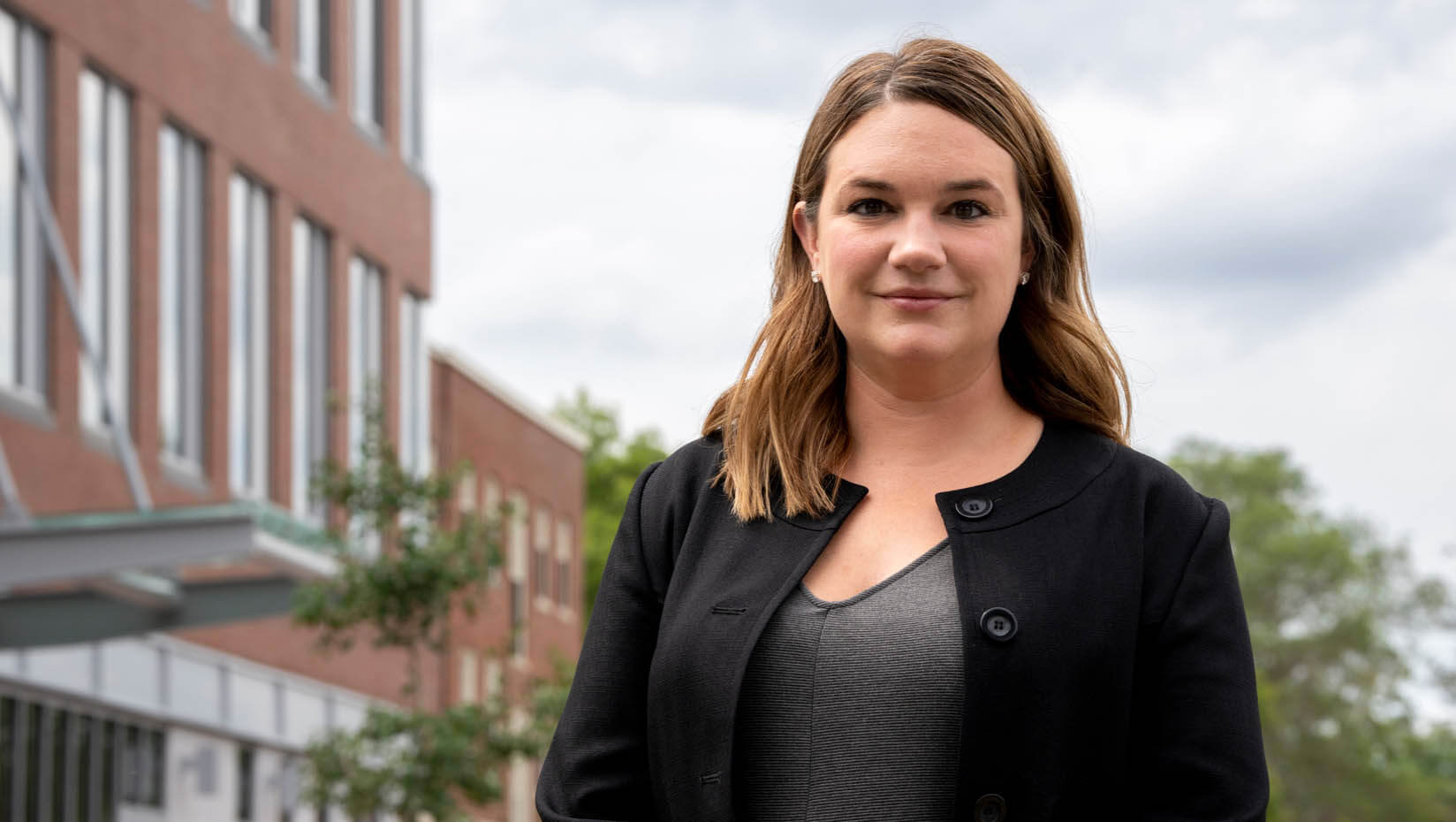
Kendra Batchelder: An interdisciplinary Ph.D. that was meant to be
Kendra Batchelder never expected that she would end up pursuing an Interdisciplinary Ph.D. in Computational Biomedicine, but in many ways it was the perfect culmination of her winding path through life so far. As Batchelder completes her final year researching mammogram image analysis with professor Andre Khalil, she is looking forward to the ways that she can continue to make math matter for medicine.
When Batchelder graduated high school in Bangor, she thought she might want to work in medicine. An aunt she admired worked as a mammography technologist, so, following in her footsteps, Batchelder applied to a radiology technologist program. As part of the application, she had to complete a hospital rotation — and the experience made her think differently about her chosen path.
“I quickly found out that I did not like blood,” Batchelder laughs. “I was not cut out to be in the hospital at that point in my life.”
Batchelder changed course and enrolled as an undergraduate at the University of Maine studying math and education. Her father was a math teacher, so growing up, she says math was all around her. It seemed like a natural fit. Because of her interest in STEM education, Batchelder enrolled in NASA’s Pre-Service Teacher STEM Institute to learn more about how to incorporate the agency’s resources and research into classroom curricula.
Her post-graduate plan seemed clear — until, in her final year as an undergraduate, she took an upper-level math class called Real Analysis with Khalil.
Near the end of the course, Khalil told his students about the research he was doing that transcended disciplines by using image analysis techniques on mammograms to predict the onset of breast cancer.
Batchelder felt a personal connection to the project. Her husband’s grandmother had just died of breast cancer. She discussed the project further with Khalil at Maine Day, spoke with some researchers and technicians in his lab before deciding to join the team herself.
Batchelder had never done research before, but she figured that if she wanted to go into STEM education, having research experience would help her better teach middle and high school students. She started with simple tasks like entering data into spreadsheets and testing computer scripts written by her lab mates.
Pretty soon, though, Batchelder was the one writing those computer scripts — and much more.
She continued on the mammogram image analysis project through her master’s in math at the University of Maine over the next two years, and then decided she wanted to keep working with Khalil as a Ph.D. student. She applied in 2013 for an Interdisciplinary Ph.D. in Computational Biomedicine, and after she took a few undergraduate courses in biology, she was able to create a doctoral program that would best suit her continued research.
Since then, Batchelder has worked on and off toward her Ph.D. — she took a few years off to take care of her young children — and is now entering her final year, polishing her dissertation on the work to which she has dedicated nearly a decade of her life.
“People will ask me how did you get here and it’s not something that was planned,” Batchelder says. “It kind of just happened and I wouldn’t want it any other way.”
After she graduates, Batchelder hopes to continue working on the project. She said that she and Khalil will be applying for a Small Business Technology Transfer (STTR) grant to create a company based on their groundbreaking research into early detection of breast cancer through image analysis.
“I would be on the company side running the company, Dr. Khalil would be on the university side, and we would collaborate together to work on the project to get some of the innovative research out of the university and into the world,” Batchelder says.
Contact: Sam Schipani, samantha.schipani@maine.edu
